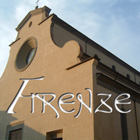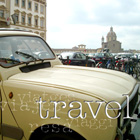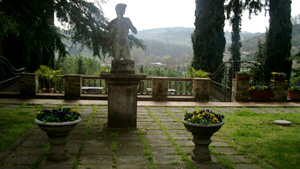
|
HOME TO THE WORKS OF THE GREAT MASTERS MICHELANGELO, DA VINCI, GIOTTO, BRUNELLESCHI, BOTTICELLI & MORE Updated 10 April 2006 Florence (Firenze in Italian) is a city like no other: a small provincial capital with the attractions and amenities of a major metropolis, but laced with the most stunning array of artistic creations available anywhere. It is a bustling cultural and tourism center, feeding the appetite of a region for a constant inflow of new visitors and for the preservation of its golden age. The city dates back beyond the medieval period to Roman and Etruscan times, but has lost much of that history in its evolution into one of the first great modern capitals of trade and finance. Its cultural development is famously steeped in the spirit of the Renaissance, and so it is rare to find unaltered medieval or ancient structures. If you're traveling in Italy and interested in seeing one of the world's premier concentrations of culture —the city's center is a UNESCO World Heritage Site—, the train system is efficient and inexpensive and you can reach Florence in a couple of hours from most cities north of Rome. The city is also a great place to embark on trips throughout the storied region of Tuscany, to sample its wines or its landscapes, to explore its old palaces and medieval cities. An increasingly viable option is to forego the city center and take root temporarily in one of the towns nearby, in a bed and breakfast (sometimes caffeletto) and see the country as you make your way into town each day. The city's history is varied, complex and turbulent. It spans periods of great openness and illumination and also brutal repression and upheaval. There is the high Renaissance, with its artistic and scientific explorations, but there was also the period of Savonarola, the zealot cleric who as Inquisitor tortured and killed Florentines not sufficiently counter-reformation for his tastes. One of the city's honored residents, Galileo Galilei, was only "pardoned" in the last 10 years for the "heresy" of his science, but Savonarola and two of his henchmen were burned in the town square after finally pushing the forward-thinking city too far. But one of Florence's less well-known but clearly fundamental innovations was in banking. It was in the 12th and 13th centuries that the city developed a strong society of merchants, craft and trade guilds, and lending and banking practices which would catapult it to prominence in coming centuries. By the mid-13th century, Florence had minted its first fiorino, the gold coin also known in English as the florin, and which would become a standard currency for trade across the European continent. Wars and infighting among factions loyal to the Pope or the Holy Roman Emperor respectively threatened to undermine prosperity and stability throughout the region, but Florence prospered as a center for regional and continental banking interests. The use of checks, banknotes, and even encrypted messages in sealed boxes (where messages opened without knowledge of the 'passkey' would self destruct) allowed Florentine banks to gain widespread influence. The Medici family, famous for its aggressive ascent to power and its commissioning of many of the greatest works of the Italian Renaissance, derived its fortunes from banking and the wool trade. It was in this prosperous and commercially charged environment that in the 15th century, the ancient Greek and Roman ideal of "art for art's sake" was revived in Florentine art, for example the rich palette and visual innovations of masters like Botticelli, growing out of the landmark innovations of versatile 14th century great Giotto, whose altarpieces, icons and architecture are considered to have inaugurated many of the basic concepts of the Florentine Renaissance. [More to come...] |
|||||||||||||||||||||
|
||||||||||||||||||||||











